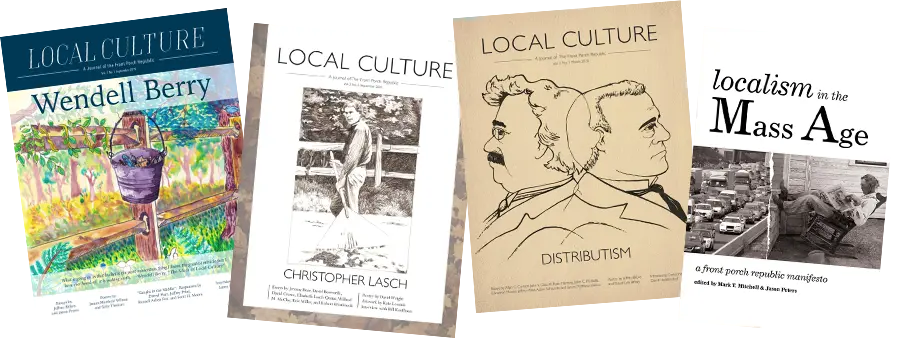Dying is one of the constants in human history. So central is death that it once warranted its own art: the ars moriendi, the art of dying. Originating in the late medieval Christian tradition, the ars moriendi sought to prepare individuals for a good and holy death, facing mortality not with fear but with faith, hope, and love. At its heart lies the conviction that how one dies reveals, more than anything else, how one has lived.
Yet the Christian tradition of dying well did not emerge in a vacuum. Earlier philosophical traditions, especially in Greece and Rome, also taught how to meet death nobly. Socrates and Cicero both envisioned the good death, though through reason rather than revelation. In comparing their visions with that of early Christian martyrdom—especially in the figure of Saint Polycarp—we can begin to see how Christianity transformed death from a private act of virtue into a public witness of love. The good death remained a confrontation with mortality, but it became something more: a participation in the life and death of Christ Himself.
Socrates faces death with serenity in Plato’s Phaedo. As his friends grieve his impending execution, Socrates calmly reminds them that the true philosopher practices dying all his life, detaching the soul from the distractions of the body. Death is not an evil to fear but a liberation of the soul, allowing it to ascend toward the Forms—the pure realities of justice, beauty, and truth.
Socrates offers several arguments for the soul’s immortality. He appeals to the cycle of opposites—life emerging from death and death from life—and to the Theory of Recollection, suggesting that all learning is a kind of remembering, pointing to the soul’s existence before birth. Most strikingly he asserts that the soul, being akin to the invisible and eternal Forms, is itself imperishable. Death, then, is a friend to the philosopher, a final release from the body’s corruption.
Socrates meets death with composure. He drinks the hemlock without trembling, comforting his friends as they weep. His bravery is strikingly similar to that of the Christian martyr. Yet there remains a certain chill to Socrates’ death. His journey is solitary. The soul joins the realm of pure Forms but not a personal communion of love. There is clarity but little warmth.
Cicero, writing centuries later, offers another vision of the good death. In the Tusculan Disputations and On Duties, he urges his Roman audience to regard death with rational indifference. Either the soul survives and ascends to better things, or death extinguishes sensation entirely—like a dreamless sleep. In neither case should it disturb the virtuous man.
For Cicero, the good death is a civic act. Virtue (virtus) is the strength that binds the soul to justice, temperance, and courage. A good Roman dies in service to the republic, preserving his honor (dignitas) and maintaining his steady bearing (gravitas) to the end. Cato the Younger becomes Cicero’s exemplar: dying by his own hand rather than submit to Caesar’s tyranny, Cato preserves his liberty and public integrity in the act of death itself. Cicero’s view ennobles death, but it remains bounded by the city and the self. There is no resurrection in Cicero’s vision, no communion with a personal God. Death is dignified but solitary. It is a final proof of character, not a passage into divine love.
Socrates and Cicero both grasp that the manner of dying reveals the soul. Yet what is missing in both is love—love understood not merely as affection but as a total self-offering to the source of life itself. The Christian martyr fulfills this missing element.
Saint Polycarp, the bishop of Smyrna martyred in the second century, offers a powerful contrast. Like Socrates, Polycarp refuses to betray his convictions under threat of death. Yet his refusal is not grounded merely in rational integrity but in loving fidelity to Christ. As he stands before the Roman proconsul, Polycarp does not appeal to the immortality of the soul or the dignity of citizenship. He simply confesses, “Eighty and six years have I served Him, and He has done me no wrong. How can I blaspheme my King who saved me?”
Polycarp’s death transforms martyrdom into a liturgical act. His execution by fire mirrors Christ’s own Passion. His body becomes a sacrifice, his death a testimony not to abstract truth but to incarnate Love. Where Socratic myth proposes likely stories about the afterlife, Christianity proclaims historical events: the Incarnation, Crucifixion, and Resurrection. The Christian does not die for a probability but for a Person.
The difference between Socratic myth and Christian proclamation is not merely one of certainty but of relationship. Socratic myth acknowledges the limits of human reason before the mystery of death; Christian narrative fulfills that longing through revelation. As C.S. Lewis wrote, myth became fact: the story humanity longed to be true was, in Christ, made real.
This does not diminish the nobility of Socrates or Cicero. Justin Martyr, one of the early Christian apologists, suggested that those who lived according to reason—logos—were Christians before Christ. Socrates, by his fidelity to conscience and truth, gestures toward the Logos made flesh. Yet without the Incarnation, the philosopher’s death remains incomplete. It seeks the good but has not yet encountered Goodness Himself.
The thread of martyrdom runs through history even into our own age. Dietrich Bonhoeffer, executed for resisting the Nazi regime, stands as a modern witness to the enduring power of the ars moriendi. Bonhoeffer’s death was not merely political; it was a theological act of costly grace, a participation in the cross. His sacrifice reminds us that martyrdom is not confined to the early Church. Wherever love and truth meet in a life laid down, the art of dying well persists.
In the end, to set the philosopher and the saint in opposition would be a mistake. The Christian martyr does not abandon reason but fulfills it. The philosopher’s pursuit of truth finds its telos not in abstraction but in communion. Socrates walks the road of reason; Polycarp walks it to its luminous end.
Socrates walks the road of reason; Polycarp walks it to its luminous end.
Both die in witness. Both stand serene before the abyss. But the Christian, borne by the love of Christ, transforms death itself into a doorway of resurrection. As Augustine would later reflect, the restless heart finds its rest not in the cold brilliance of the Forms but in the living God who formed them.
The ars moriendi thus becomes not merely a preparation for death, but a calling to live—and die—for that which transcends the self. Whether through reason or revelation, the good death reveals the good life: one oriented toward the eternal, steadfast in truth, and radiant in love. In their final moments, philosophers and saints alike bear witness to this enduring reality: that beyond death, there is more.
Image Credit: The Empty Tomb, 6th-century mosaic via Flickr






